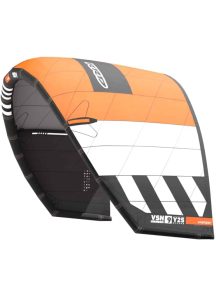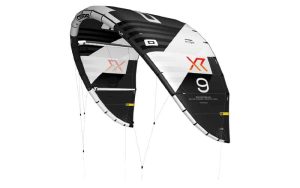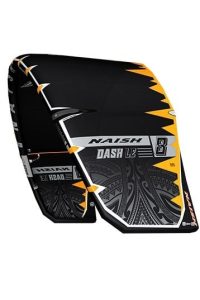This page should help you to find the right kite models. The kite size plays an important role when buying a kite. You should find out in advance what wind conditions you want to cover with your kite.
1. Choose Riding Type
- Allround
- Freestyle
- Wave
- Foil
- Light Wind

2. Determine Your Riding Skill Level
- Beginner
- Intermediate
- Advanced

3. Select Your Kite Size
- 5 m²
- 7 m²
- 9 m²
- 14 m²
- 20 m²
Select the kite size that suits you from 5 m² to 20 m².

Selecting a Kite
The size of an kite depends on various factors such as the wind force. While a smaller kite is more suitable in stronger winds, larger specimens make for more fun to ride in weak wind conditions.
You can select your Kite Here
The heavier you are, the larger the wind-exposed area of your future kite must be. Bow kites are best suited for beginners. They offer you a high level of safety and flight stability. The water start is very easy with these kites. In addition, the steering system forgives small mistakes.
C-Kites are designed for tricks in wake- and freestyle. With this kite you have a direct flight behaviour and a high turning speed – perfect for hard tricks and a long air-time. With a hybrid kite you have direct steering, a strong base line and slack.
Kites are available in different versions, which differ, among other things, with regard to the area of attack and the angle of the wind. We will show you which kite shapes are available. If you have any specific question, feel free to contact us
Softkite
Softkites are similar in appearance to paragliders. The sewn-in air chambers automatically fill with air in windy conditions. The kite gets its shape from the dynamic pressure in the individual chambers.
Tubekite
Compared to soft kites, tube kites have several tracheae (tubes), a front tube that gives the kite its shape and three to five cross tubes (struts) that give the sail surface stability. To give the kite its characteristic shape, the tubes must be filled with air using a pump. Within the tube kites, a distinction is made between four subtypes: C-kite, bow kite and hybrid kite.
C-Kite
The C-Kite owes its name to its strongly curved canopy shape. In contrast to other tube kites, this version has a smaller surface and therefore catches less wind. The biggest difference to other tubekites is the missing bridle lines at the leading edge. This leads to less depower and more pull on the bar. The high forces on the bar promise a very direct feeling.
Bow-Kite
The profile of a bow kite is even flatter than that of a C-kite. The front tube does not run linearly, but is “pulled around” in an arc at both ends. The indirect control of the kite is done by the bridle lines, which makes it easy to depower the kite. This way you always keep control of your kite even in difficult situations.
Hybrid-Kite
The hybrid kite combines the characteristics of a C and Bow kite. The result: You can look forward to a more direct flight and steering feeling as well as less power at the bar. However, this also makes mistakes more difficult to make.
Select a Kiteboard
It is not always easy to find a suitable kiteboard. At the beginning there is a lot to consider. Take your time to find the right board for you and your riding style.
You can select your Kiteboard here
Tip for beginners: Use a big kiteboard for the beginning. You learn faster, have less negative experiences when launching and can glide and ride super fast. And if you can ride well and need a new board, you can keep the big board and have fun in light winds. The outline is the shape of your board. If you find a round outline, your board is forgiving and makes the choppy water ride easier. The more square, the more pop and control you have at high speeds. These boards do not ride as easily as the rounder versions. The rocker shape is the bend of your kite board. The higher the rocker, the higher the profile of the board. You can easily ride through Choppy Water. A flat board is faster, but doesn’t go through the waves as easily.
The flex shows the stiffness of your board. A lot of flex gives you soft landings and comfort. Lots of flex but minimizes the pop when jumping. A freestyle/wakestyle board is much stiffer so you can “pop out” harder. Channels are channels that are pressed into your kite board to give you more grip. The channels improve the water flow in addition to the fins. You will have a great riding experience even without fins, because the channels guide you. Also with directional kiteboards you have to pay attention to the shape, because this gives the board a certain character.
Some boards are noseless and are advantageous for kiting because they are lighter than standard surfboards. The board will be more responsive and playful, but can dive into a steep wave. Finns should not be forgotten. Mostly the waveboards have three to four. The outline is the contour of a surfboard and determines the riding characteristics. A straight outline is faster, can glide better through the water, up-wind rides are easy, it gives you a lot of control but the turns are rather tough.
A rounder outline gives you more playfulness. The tail determines the flow of the board and the steering behavior. A round tail gives you more grip for more stability in big waves and pulls nice turns at high speed. A square tail allows you to make fast turns because it is deep in the water.
The more rockers a surfboard has, the easier it turns, dives less fast than a flat board and feels very playful. But it is not that fast. Going against the wind is easier with a flat board. The volume determines how much buoyancy the board has. With a lot of volume, you can get on the water with little wind because it floats better on the water. The flex determines the stiffness of the board.
A hard board is associated with a direct feel and sharp steering. Channels give you more grip and guidance, especially on straight lines at high speed. A concave is a negative curve under the board that gives you more grip. If you have any further questions, feel free to call, write an e-mail or visit the store personally. In any case you will receive a detailed consultation.
Wakestyle Kiteboard
This style comes from wakeboarding and the board has a strongly curved shape, the rocker shape. You perform tricks unhooked. The pop while jumping comes from the board. It is often a little bigger to give you more pop and stability. On this kiteboard you wear boots. You are firmly attached to your board and can edge with a lot of pressure to maneuver yourself out of the water. The inserts for your boots are reinforced. The shape is square and almost always these boards have channels on the bottom to give you extra grip. With this board you can ride over obstacles, because the bottom is extra reinforced. You can also perform with it on the cable. Less suitable for kiteloops and fast acceleration.
Freestyle Kiteboard
Here you will also find a square outline. The bottom, however, has less strong channel guides. You can attach boots or loops to it. These boards are slightly lighter than the wakestyle boards.
Freeride Kiteboard
Here you will find a classic, straight twin tip kiteboard with versatile features. You can ride fast and jump high with this board. You can also use it in the waves, but pay attention to the degree of flex. Too much flex makes you ride unevenly and uncontrollably. The outline is a bit rounder to forgive you small mistakes.
Race Kiteboard
Here you will find only a few boards. These boards are made in a wide directional shape and have long fins for maximum guidance in the water. These boards are faster than fast and should only be used with footstraps. They are designed to give you maximum control at high speed. To minimize drag, they are built very flat. These boards are designed to ride fast straight ahead.
Wave Kiteboard
A waveboard is the surfboard for the wave while kiting. It looks like a wave rider, i.e. a directional shape, but is twice as stable so that it can absorb the power of your kite. Also the up-wind characteristics are very important with this kite board. You can ride it with loops or strapless. To get more grip you can use traction pads or wax.